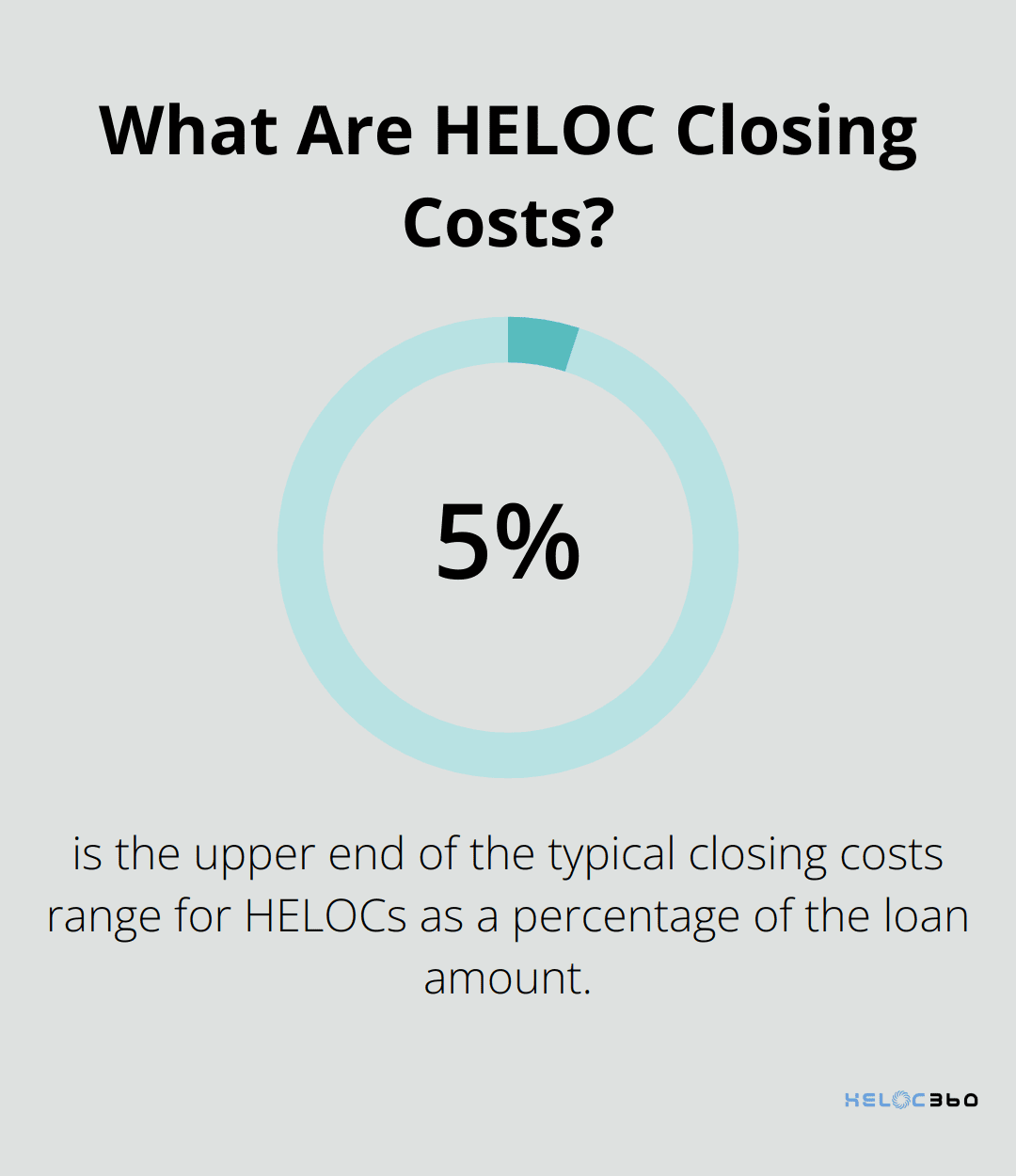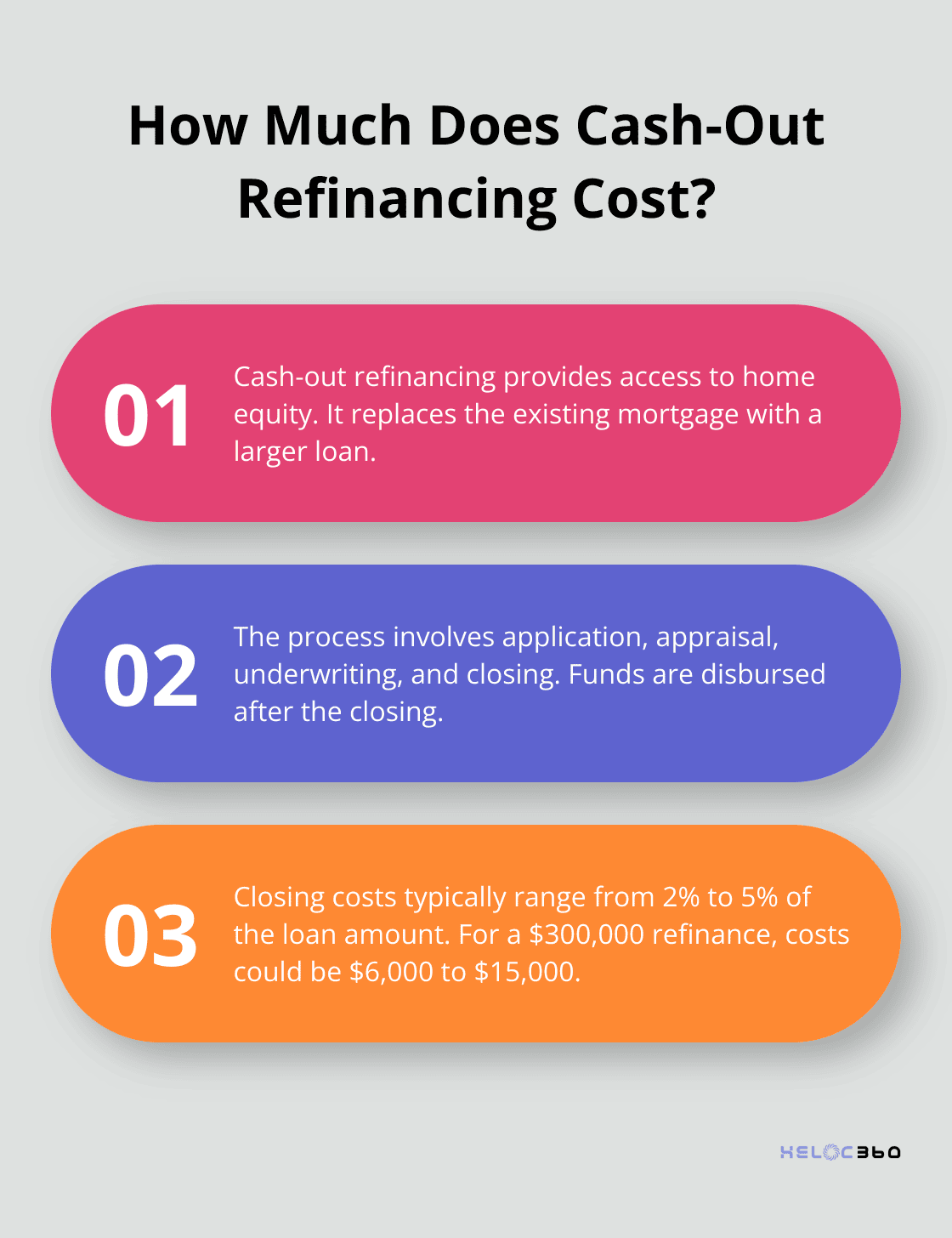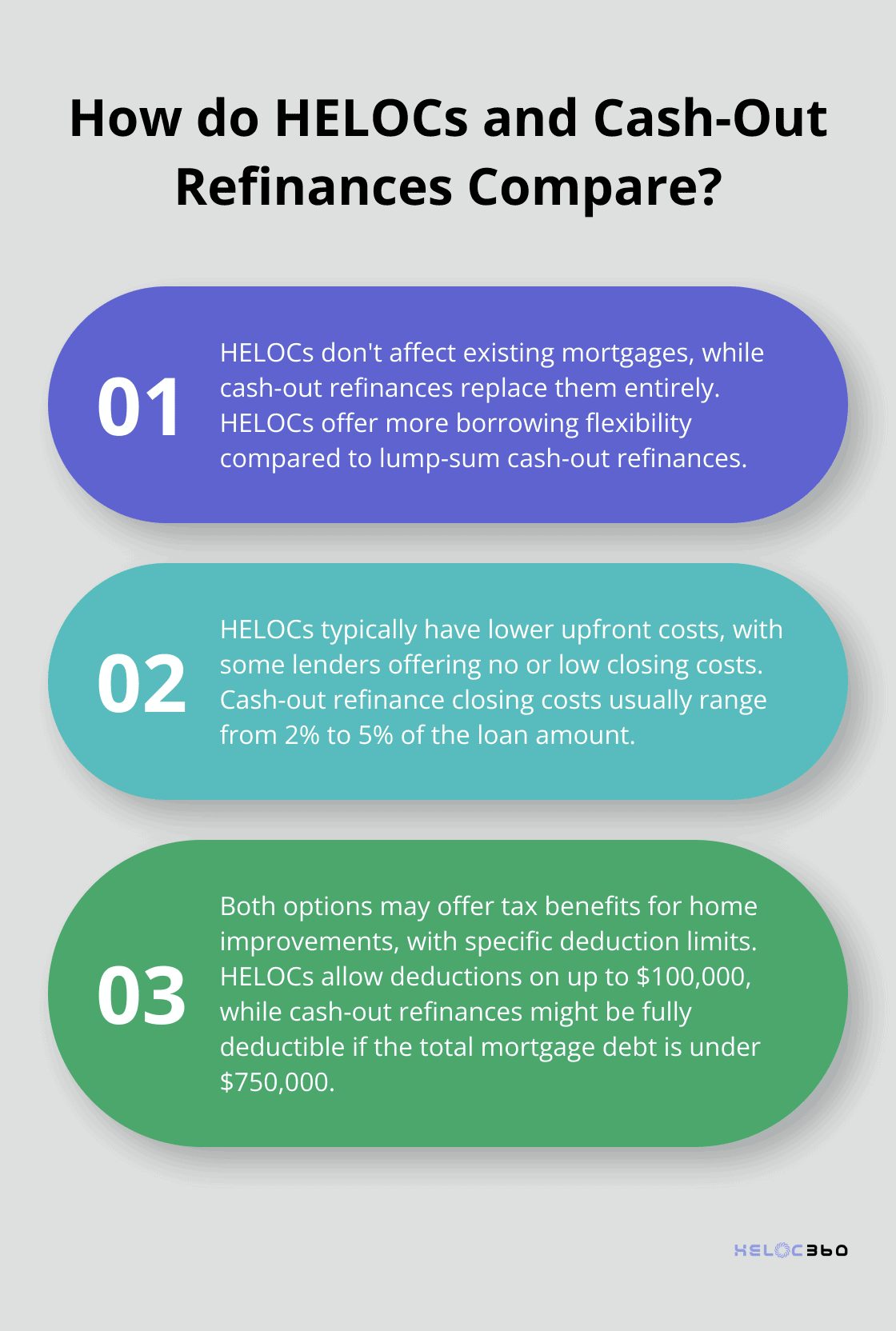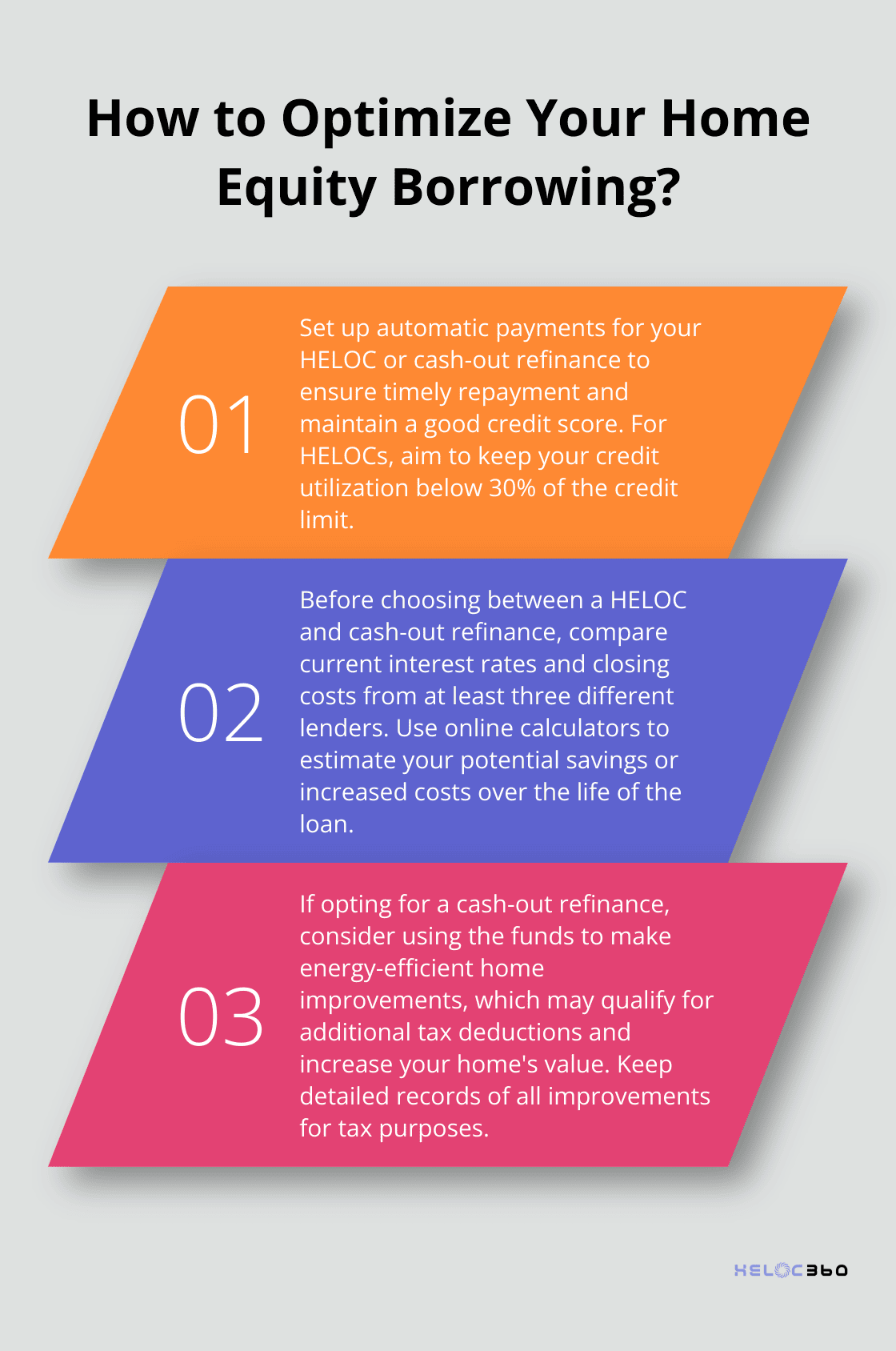- ***PAID ADVERTISEMENT**
- ACHIEVE LOANS – HOME EQUITY EXPERTISE
- FLEXIBLE FINANCING SOLUTIONS
- PERSONALIZED SUPPORT
- RECOMMENDED FICO SCORE: 640+
- COMPETITIVE RATES STREAMLINED APPLICATION PROCESS
Homeowners often face a crucial decision when tapping into their home’s equity: choosing between a home equity line of credit versus cash-out refinance. Both options offer unique advantages and potential drawbacks.
At HELOC360, we understand the importance of making an informed choice that aligns with your financial goals and circumstances. This guide will break down the key differences between HELOCs and cash-out refinances, helping you navigate this important decision with confidence.


- Approval in 5 minutes. Funding in as few as 5 days
- Borrow $20K-$400K
- Consolidate debt or finance home projects
- Fastest way to turn home equity into cash
- 100% online application
What Is a HELOC?
Definition and Basic Concept
A Home Equity Line of Credit (HELOC) is a financial tool that allows homeowners to use some of their home’s value to secure credit and withdraw cash. It functions as a revolving credit line, similar to a credit card, but uses your home as collateral.
How HELOCs Work
When you open a HELOC, the lender approves you for a maximum credit limit based on your home’s value and your outstanding mortgage balance. The HELOC lifecycle consists of two main phases:
- Draw Period: This phase typically lasts 5 to 10 years. During this time, you can borrow as much as you need, up to your credit limit. You only pay interest on the amount you borrow, not the entire credit line.
- Repayment Phase: After the draw period ends, you enter the repayment phase (usually 10 to 20 years). You can no longer borrow from the credit line and must repay the principal plus interest.
HELOC Interest Rates and Terms
HELOCs usually come with variable interest rates, which can fluctuate based on market conditions. As of 2025, the average HELOC interest rate ranges from 8.0% to 8.5%. However, individual rates may vary based on factors such as credit score and loan-to-value ratio.

These rates are significantly lower than those for unsecured personal loans, which makes HELOCs an attractive option for many homeowners.
Advantages of HELOCs
- Flexibility: You borrow only what you need when you need it. This feature proves particularly useful for ongoing projects or expenses with variable costs.
- Lower Closing Costs: HELOCs often have closing costs of up to 2-5% of the loan amount, which are typically lower than the fees on a cash-out refinance.
- Interest-Only Payments: During the draw period, you might have the option to make interest-only payments, which can lower your monthly obligations.
Disadvantages of HELOCs
- Variable Interest Rates: The fluctuating rates can lead to unpredictable monthly payments.
- Risk of Overextension: Without proper discipline, you might borrow more than you can comfortably repay.
- Potential for Foreclosure: Since your home serves as collateral, failure to repay could result in losing your property.
Many homeowners use HELOCs to fund home improvements, consolidate high-interest debt, or cover large expenses like college tuition. However, it’s essential to have a solid repayment plan in place to mitigate risks.
While HELOCs can be a powerful financial tool, they’re not suitable for everyone. Your specific financial situation, goals, and risk tolerance should all factor into your decision. In the next section, we’ll explore another popular option for accessing home equity: cash-out refinancing.
What Is Cash-Out Refinancing?
Definition and Concept
Cash-out refinancing is a financial tool that allows homeowners to access their home’s equity while potentially securing a better interest rate on their mortgage. This option replaces an existing mortgage with a new, larger loan, providing the difference in cash.
The Process
Cash-out refinancing involves several steps:
- Application: Homeowners submit a loan application, similar to their original mortgage process.
- Home Appraisal: Lenders order an appraisal to determine the home’s current market value.
- Underwriting: The lender reviews the application, credit history, and financial situation.
- Closing: Approved applicants attend a closing to sign the new loan documents.
- Funds Disbursement: After closing, homeowners receive the cash-out portion of their refinance.
Current Market Rates
As of February 2025, cash-out refinance rates for a 30-year fixed-rate mortgage are calculated weekly. These rates can vary based on factors such as credit score, loan-to-value ratio, and overall market conditions.
Advantages of Cash-Out Refinancing
Cash-out refinancing offers several benefits:
- Access to Large Sums: It provides access to substantial amounts of money at relatively low interest rates.
- Potential for Lower Rates: If current mortgage rates are lower than existing rates, homeowners might save on monthly payments.
- Debt Consolidation: The funds can be used to pay off high-interest debts, potentially improving credit scores.
Drawbacks to Consider
Cash-out refinancing also comes with some disadvantages:
- Increased Debt: It increases overall mortgage debt and potentially extends the loan term.
- Higher Interest Payments: Homeowners could pay more in interest over the life of the loan.
- Foreclosure Risk: Inability to make payments on the new, larger loan could result in foreclosure.
- Closing Costs: These typically range from 2% to 5% of the loan amount (e.g., $6,000 to $15,000 on a $300,000 refinance).
Impact on Credit Score
Cash-out refinancing can affect credit scores. The hard inquiry during the application process might cause a temporary dip. However, over time, as your other credit accounts age, the impact of a refinance on your credit scores will generally lessen.

While cash-out refinancing can be a powerful tool for achieving financial goals, it’s important to consider the long-term financial implications. The next section will compare cash-out refinancing with another popular equity-tapping option: Home Equity Lines of Credit (HELOCs).
HELOC vs Cash-Out Refinance: Key Differences
Impact on Your Mortgage
A HELOC does not affect your existing mortgage. You keep your current mortgage terms and rates, which benefits you if you already have a low interest rate. For example, if you secured a 3% fixed-rate mortgage in 2021, you maintain that rate while accessing additional funds through a HELOC.

A cash-out refinance replaces your current mortgage entirely. This can benefit you if current rates are lower than your existing rate, but it might not be ideal in a rising rate environment. If you refinance from a 3% to a 6% rate, your monthly payments could increase significantly.
Borrowing Flexibility
Compared to HELOCs, cash-out refinances are less risky for lenders, meaning they are often able to provide lower interest rates – though you may have less flexibility in borrowing.
Cash-out refinances provide a lump sum upfront. While this works well for large, one-time expenses, it lacks flexibility for evolving financial needs. You pay interest on the entire amount from day one, even if you don’t need all the funds immediately.
Associated Costs
HELOCs generally have lower upfront costs. Many lenders offer HELOCs with no or low closing costs, sometimes absorbing these fees themselves. However, some HELOCs come with annual fees (ranging from $50 to $100).
Home equity loan closing costs typically range from 2% to 5% of the loan amount, but some lenders may reduce or waive them altogether.
Tax Implications
Both HELOCs and cash-out refinances can offer tax benefits, but only if you use the funds for home improvements. A HELOC may be tax deductible depending on when you took it out and what you used the funds for.
For a cash-out refinance, the interest on the entire new mortgage might be tax-deductible if you use the funds for home improvements and the total mortgage debt doesn’t exceed $750,000 ($375,000 for married filing separately).
With a HELOC, you can deduct interest on up to $100,000 of the loan ($50,000 for married filing separately) if used for home improvements. However, you should consult a tax professional for personalized advice, as tax laws can change and individual situations vary.
Credit Score Effects
Both options will likely cause a temporary dip in your credit score due to the hard inquiry during the application process. However, the long-term effects differ.
A HELOC, being a revolving credit line, can have a more significant impact on your credit utilization ratio. If you maintain a high balance on your HELOC, it could negatively affect your credit score.
A cash-out refinance, while initially causing a slight drop, might improve your credit score over time if you use it to consolidate and pay off high-interest debts. This could lower your overall credit utilization and improve your payment history.
Final Thoughts
Homeowners face a significant decision when choosing between a home equity line of credit versus cash-out refinance. HELOCs offer flexibility and lower closing costs, while cash-out refinancing provides a lump sum and potential for lower interest rates. Your choice depends on factors such as your current mortgage rate, desired equity access, and long-term financial goals.

At HELOC360, we understand the complexity of these options. We’ve developed a platform to help homeowners maximize their home equity potential, providing expert guidance and connecting you with suitable lenders. Our goal is to simplify your journey towards achieving your financial aspirations.
The right choice aligns with your individual situation and financial objectives. We recommend you carefully evaluate the pros and cons of each option and seek professional advice. This approach will help you make an informed decision that sets you on the path to financial success.
Our advise is based on experience in the mortgage industry and we are dedicated to helping you achieve your goal of owning a home. We may receive compensation from partner banks when you view mortgage rates listed on our website.
